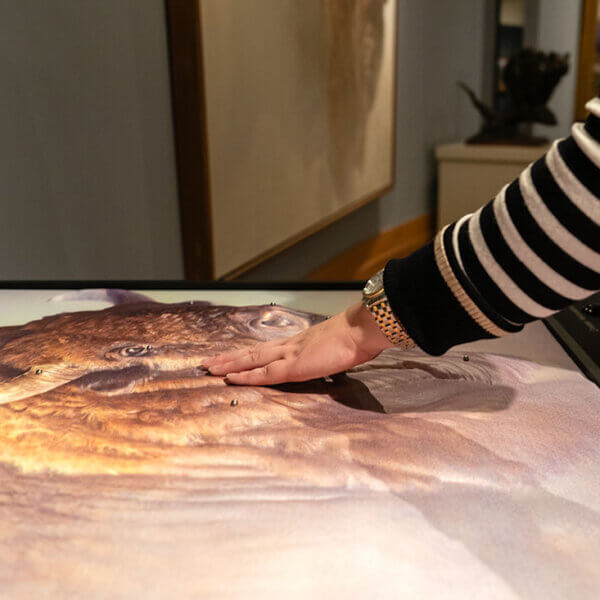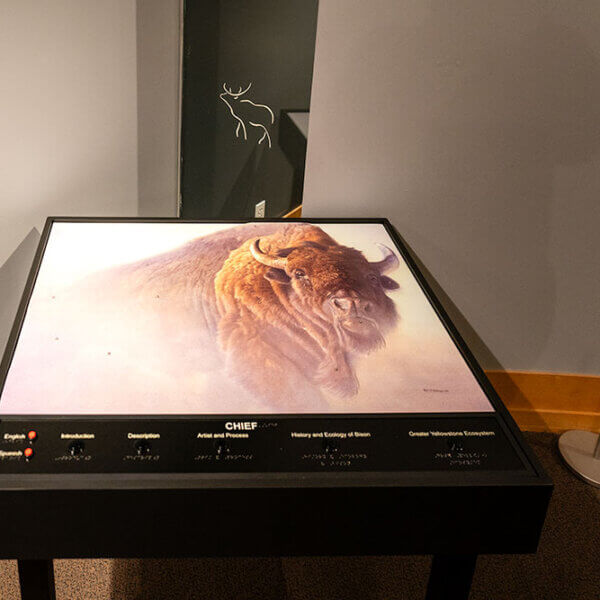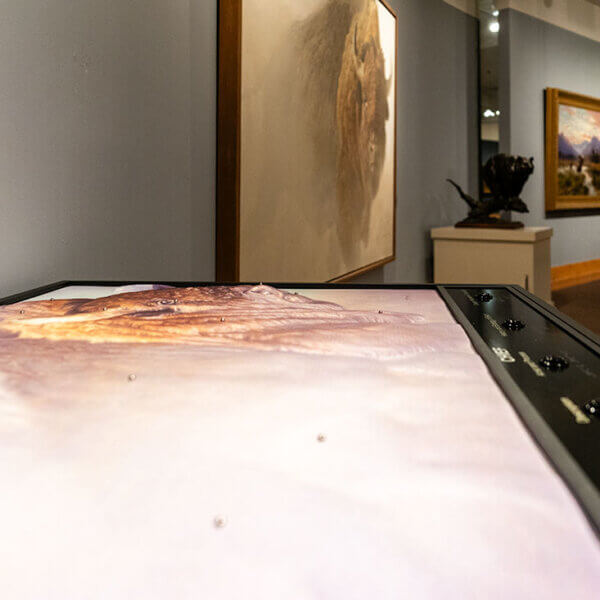New 3D Tactile Display of Chief at the National Museum of Wildlife Art
February 14, 2024The National Museum of Wildlife Art (NMWA) announces the addition of a new 3D tactile display for the Museum’s Greene Pathways Gallery. Chief, by the artist Robert Bateman, was replicated into an interactive installation. This 3D relief allows blind and low-vision visitors to engage with the artwork through touch and sound. The Smart Family Fund generously sponsored the display.
NMWA partnered with Tactile Images and 3DPhotoWorks to re-create Chief into a tactile image with which all visitors can engage through a multi-sensory experience. Through the senses of touch and sound, the blind and visually impaired community will be able to experience this amazing work by Bateman. In addition to 3D imagery, braille is used for text, and there is a combination of sensors to provide a touch-activated narrative in both English and Spanish. The audio clips include statements from the artist and sounds from the Yellowstone Sound Library. These features will allow museum visitors to use the confluence of sensory stimulation to form their own mental picture of the image. Visually impaired visitors can explore the depth and complexity of one of the Museum’s most popular works, perhaps for the first time.
The idea for an accessible art display was formed when Jane Lavino, the Museum’s Sugden Chief Curator of Education, and Julia Spencer, the Associate Curator of Education, attended the American Association of Museums annual conference. Tactile Images was at the conference, featuring an exhibit of 3D artworks and photographs. “3D artworks have great potential to support the Museum’s goal of broadening the audiences and populations who feel welcome and engaged when visiting,” Lavino says. “Ideally, at some point in the future, all of the Museum’s permanent galleries will have one tactile interactive display so we can provide a substantive experience for blind/low vision visitors.” NMWA is committed to increasing accessibility for all Museum visitors.
The Museum chose Chief to be the first accessible art display for several reasons. “It is a massive, impactful piece that translates well to a multi-sensory experience,” Spencer says. “This work is also a visitor favorite and provides a great introduction to the Museum and the Greater Yellowstone Ecosystem.” These displays allow the blind community access to images and the ecological, cultural, and historical information embedded within them. NMWA’s mission is to impart knowledge and generate wonder through art and education. The tactile rendition of Chief will allow blind visitors to interact with and experience the art independently. Sighted visitors are also welcome to experience the 3D Chief. “Any Museum visitors eager for a multi-sensory experience will enjoy it,” Spencer says.
Additional enrichment for blind/low-vision visitors at the Museum is the upcoming “Sensory Immersion” audio tour. Within the Museum’s app, “Sensory Immersion” will be a six-stop tour that gives rich audio descriptions of select paintings throughout the Museum’s galleries. Production on the tour is in the final stages, with an anticipated launch this spring.



